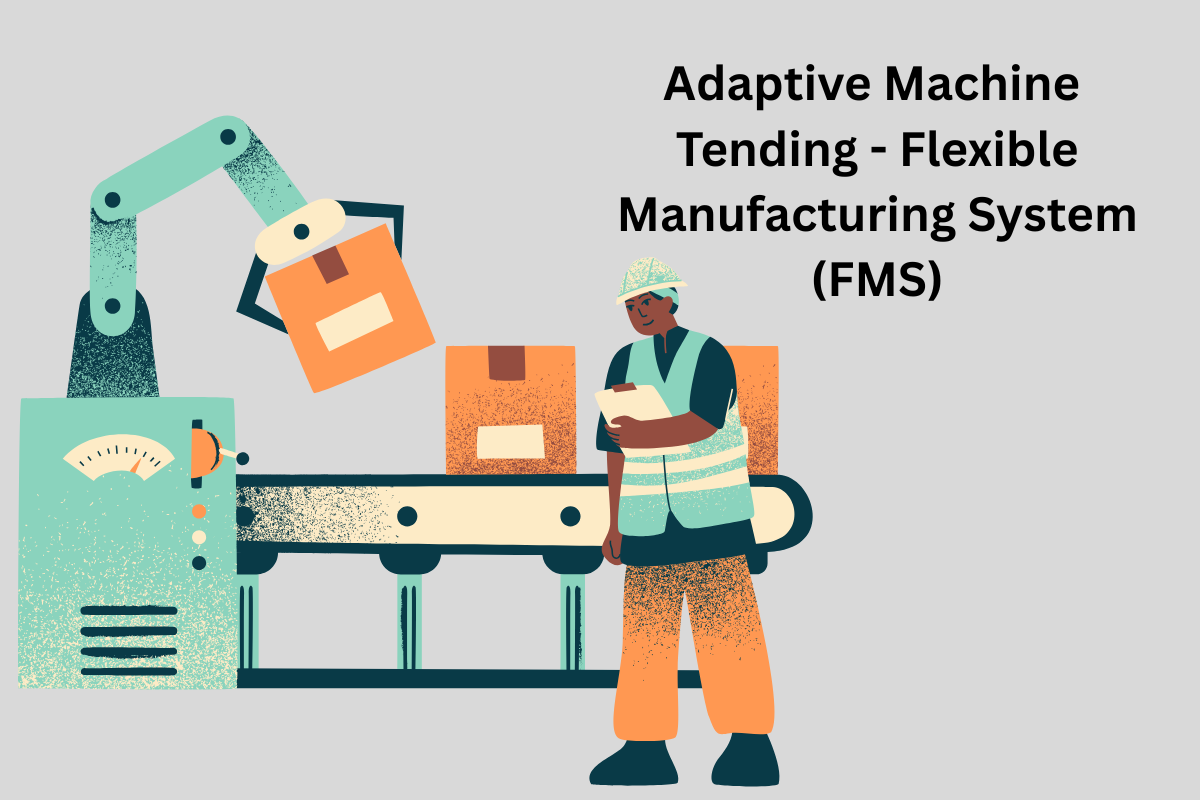
12 Jul Adaptive machine tending – Where manufacturing demands flexibility
Adaptive machine tending – Where manufacturing demands flexibility
In today’s rapidly evolving manufacturing landscape, where customization, shorter production runs, and faster time-to-market are becoming the norm, traditional fixed automation no longer meets the pace of change. This shift is driving the adoption of adaptive machine tending—an intelligent, flexible approach to automating machine operations that can seamlessly respond to changing production demands.
Adaptive machine tending refers to robotic systems equipped with advanced sensors, vision technology, and AI-driven decision-making, enabling them to handle a variety of tasks, machines, and part geometries without the need for extensive reprogramming. These systems are designed to adapt in real time to variable inputs—whether it’s a change in product design, part orientation, batch size, or scheduling priorities—making them especially suited for high-mix, low-volume manufacturing environments.
The core advantage of adaptive tending lies in its ability to increase operational agility while reducing downtime. With features like dynamic part recognition, quick reconfiguration, and safe human-robot collaboration, manufacturers can streamline workflows, improve overall equipment effectiveness (OEE), and reduce reliance on manual labor for repetitive tasks.
From CNC machining centers to injection molding machines and assembly lines, adaptive tending robots can serve multiple machines within a work cell, prioritize tasks based on production needs, and even learn from past performance to improve efficiency. When integrated with Manufacturing Execution Systems (MES) and ERP software, these systems contribute to real-time production optimization and smart decision-making.
As industries embrace Industry 4.0, adaptive machine tending is proving essential for future-ready operations. It not only improves productivity and consistency but also supports sustainable growth by optimizing resource usage and enhancing workforce utilization. In a world where manufacturing demands speed, customization, and resilience, adaptive machine tending is the key to staying competitive and agile.
In today’s highly dynamic and demand-driven manufacturing environment, flexibility is not just an advantage—it’s a necessity. Traditional machine tending systems, designed for fixed operations and single-product workflows, are rapidly being outpaced by the complexities of modern production. This is where adaptive machine tending emerges as a game-changer—bringing agility, intelligence, and responsiveness to the shop floor.
What is Adaptive Machine Tending?
Adaptive machine tending refers to the use of intelligent robotic systems and automation solutions that can seamlessly adjust to different machines, part types, processes, and production schedules. Unlike static systems that follow predefined routines, adaptive systems are designed to learn, sense, and respond to variations in the manufacturing environment—making them ideal for high-mix, low-volume production scenarios.
These systems often integrate technologies such as AI-based vision systems, collaborative robots (cobots), machine learning algorithms, and real-time sensor feedback to execute complex, multi-step tasks with minimal human intervention.
Why Flexibility Matters in Manufacturing
Today’s manufacturers face an increasing number of challenges, including:
- Rapid product changes and customization
- Shorter product life cycles
- Labor shortages and skill gaps
- Fluctuating order volumes
To remain competitive, manufacturers must quickly adapt their production lines without incurring high costs or downtime. Adaptive machine tending empowers factories to achieve this by enabling robots to switch between different tasks, handle a variety of components, and work safely alongside human operators when needed.
Key Features of Adaptive Machine Tending Systems
- Multi-Machine Capability
Adaptive systems can tend multiple machines (e.g., CNCs, injection molding, stamping presses) with minimal changeover time. - Dynamic Task Reprogramming
Operators can easily modify robot instructions or workflows through user-friendly interfaces, reducing the need for expert programmers. - Vision-Based Part Recognition
Integrated vision systems allow robots to identify and sort various part shapes and orientations, enhancing pick-and-place accuracy. - Collaborative Operation
Cobots ensure safe operation around humans, ideal for mixed-use cells where manual and automated tasks coexist. - Intelligent Scheduling Integration
These systems can be connected to MES or ERP systems, enabling real-time prioritization and job allocation based on production data.
Benefits of Adaptive Machine Tending
- ✅ Reduced Downtime: Quick setup changes and intelligent fault detection minimize delays between operations.
- ✅ Improved Productivity: Robots work longer hours with consistent performance, improving throughput and efficiency.
- ✅ Scalability: Systems can be upgraded or reprogrammed as business needs evolve, extending ROI.
- ✅ Workforce Optimization: Employees can focus on higher-value tasks while robots handle repetitive, labor-intensive duties.
- ✅ Error Reduction: Smart sensors and vision systems improve process accuracy and part consistency.
Real-World Applications
- Job shops dealing with varied part runs
- Aerospace and automotive industries requiring precision and frequent design iterations
- Medical device manufacturing, where compliance and customization go hand in hand
- Electronics assembly with diverse, sensitive components
The Future of Flexible Manufacturing
As manufacturers increasingly adopt Industry 4.0 and smart factory principles, adaptive machine tending is becoming a cornerstone of digital transformation. Its ability to integrate seamlessly into lights-out manufacturing strategies makes it ideal for businesses aiming to stay ahead of global competition.
With constant advancements in robotics, AI, and IoT, the future of machine tending is not just automated—it’s adaptive, intelligent, and truly flexible.

No Comments